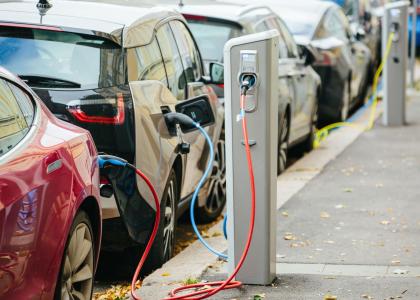In the energy efficiency world, programs that reduce energy use by targeting human behavior are relatively few, but proliferating quickly. In 2013, some US states claimed as much as 28% of their energy efficiency savings from behavior change programs. Like Pokémon Go characters in the wild, some behavior change programs are common, well-known, and seen everywhere. Others are rare and largely unknown. Still others are rarely seen but hold great potential. Utility program administrators may be familiar with a few of these programs, but an expert guide can help identify others and explain the best methods for capturing, collecting and using all of them. A new ACEEE report provides a thorough guide for understanding the world of energy efficiency behavior change programs, and why they work.
Home Energy Reports, the Diglett of behavior change programs
By far, the most common behavior change program implemented by utility program administrators are home energy reports (HERs) that feature social comparison information. These programs reduce energy consumption by giving residents reports on their energy use every one to four months (in addition to their monthly energy bills). The reports tell residents how much energy they used in comparison to similar homes in their region and include tips on how to reduce energy consumption. HERs have been implemented by utilities since 2008 and consistently reduce electricity use by about 1-2% (and gas by roughly 0.5-1%) by the end of their second year. The ACEEE report summarizes 30 such programs that were evaluated since 2013, and examines questions such as: How long do savings persist? Should HERs be delivered by paper or email? Should participants be automatically enrolled? How frequently should HERs be delivered? Like Diglett, these programs are common and well known. They play a significant role in shaping the landscape of behavior programs.
Games and competitions, the Pikachu of behavior change programs
For those interested in slightly more exotic behavior change programs, there are games and competitions. These proliferating programs are becoming the go-to-strategy for utilities and third parties interested in reducing energy consumption through behavior change. Like a rare Pikachu in the wild, they are quick, but their stamina (HP) is unknown. Though they can effectively change behavior, more needs to be learned about their long-term effectiveness. Utilities have implemented competitions between individuals, businesses, buildings, neighborhoods or even cities. For example, a series of competitions between commercial offices in Northwest USA resulted in 2-6% electricity reduction. Games such as Cool Choices make saving energy within a workplace fun and, in the process, reduce electricity consumption by as much as 6.6%. However, games and competitions can’t last forever. They motivate participants to save energy by rewarding the highest achievement when the event is complete. Although initial research suggests that energy savings likely persist after the end of the program, more data is needed.
Education Programs in K-12 Schools, Dragonite or Mew?
Education programs in K-12 schools frequently claim that they can reduce electricity use by 20% or more, but their methods of evaluation are usually weak or unknown. As such, these may be rare and powerful Dragonite-like programs, or they may continue to be mysterious Mew-type programs. More research is required to determine their true impact and long-term effectiveness.
Capture difficulty: Which social science strategies make behavior change programs effective?
Behavior change programs may work in different ways, but they all benefit from integrating research on psychology and human behavior. For example, community-based programs sometimes solicit pledges from homeowners to reduce their energy consumption. This element is effective because research shows that people who make public commitments to energy savings are more likely to take action than those who make private commitments or no commitments at all. According to one meta-analysis, the most effective strategy may be to use an energy champion or leader with a social network to promote the behavior change. Volunteer leaders or trusted messengers are effective at changing the behavior of their friends, family, co-workers, or community members, because they are trustworthy and credible, and because they can exert a degree of social pressure. Including this element can strengthen most group-based efforts such as competitions, education programs or strategic energy management. Public commitment and energy champions are just two of many tested strategies that make behavior change programs effective.
Feeling lost?
For those wanting to navigate the energy-behavior wilderness or nurture their own behavior change programs to maturity, the ACEEE guide to Behavior Change Programs: Status and Impact picks up where the 2013 Field Guide to Behavior Change Programs left off. There are many behavior change programs out there, each ranging in effectiveness and applicability. This guide helps to identify a variety of programs, from common to rare.




